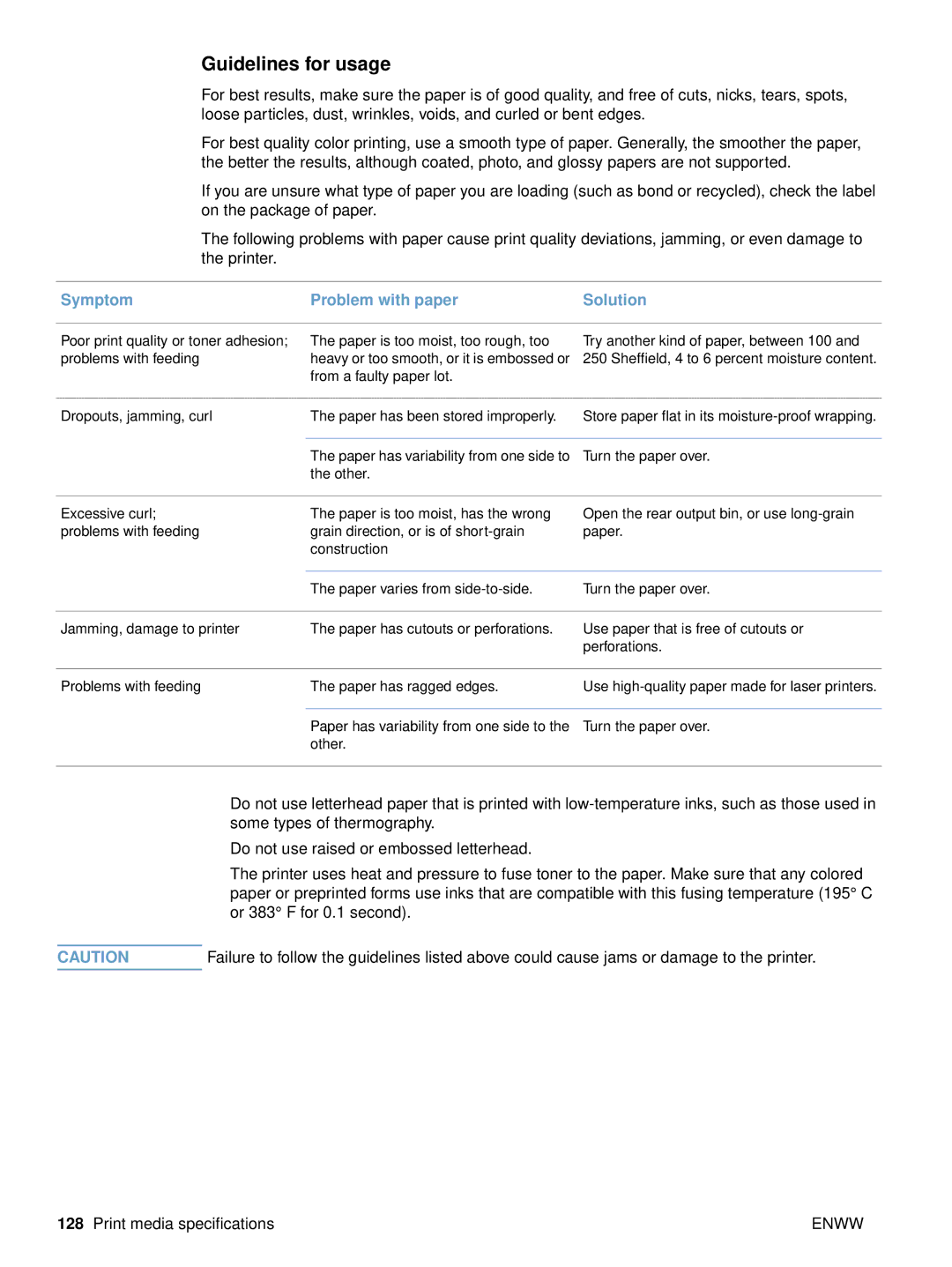
Guidelines for usage
For best results, make sure the paper is of good quality, and free of cuts, nicks, tears, spots, loose particles, dust, wrinkles, voids, and curled or bent edges.
For best quality color printing, use a smooth type of paper. Generally, the smoother the paper, the better the results, although coated, photo, and glossy papers are not supported.
If you are unsure what type of paper you are loading (such as bond or recycled), check the label on the package of paper.
The following problems with paper cause print quality deviations, jamming, or even damage to the printer.
Symptom | Problem with paper | Solution |
Poor print quality or toner adhesion; problems with feeding
The paper is too moist, too rough, too heavy or too smooth, or it is embossed or from a faulty paper lot.
Try another kind of paper, between 100 and 250 Sheffield, 4 to 6 percent moisture content.
Dropouts, jamming, curl | The paper has been stored improperly. | Store paper flat in its |
|
|
|
| The paper has variability from one side to | Turn the paper over. |
| the other. |
|
Excessive curl; | The paper is too moist, has the wrong |
problems with feeding | grain direction, or is of |
| construction |
Open the rear output bin, or use
The paper varies from | Turn the paper over. |
Jamming, damage to printer | The paper has cutouts or perforations. |
Use paper that is free of cutouts or perforations.
Problems with feeding | The paper has ragged edges. | Use |
|
|
|
| Paper has variability from one side to the | Turn the paper over. |
| other. |
|
|
|
|
●Do not use letterhead paper that is printed with
●Do not use raised or embossed letterhead.
●The printer uses heat and pressure to fuse toner to the paper. Make sure that any colored paper or preprinted forms use inks that are compatible with this fusing temperature (195° C or 383° F for 0.1 second).
CAUTION | Failure to follow the guidelines listed above could cause jams or damage to the printer. |
128 Print media specifications | ENWW |
